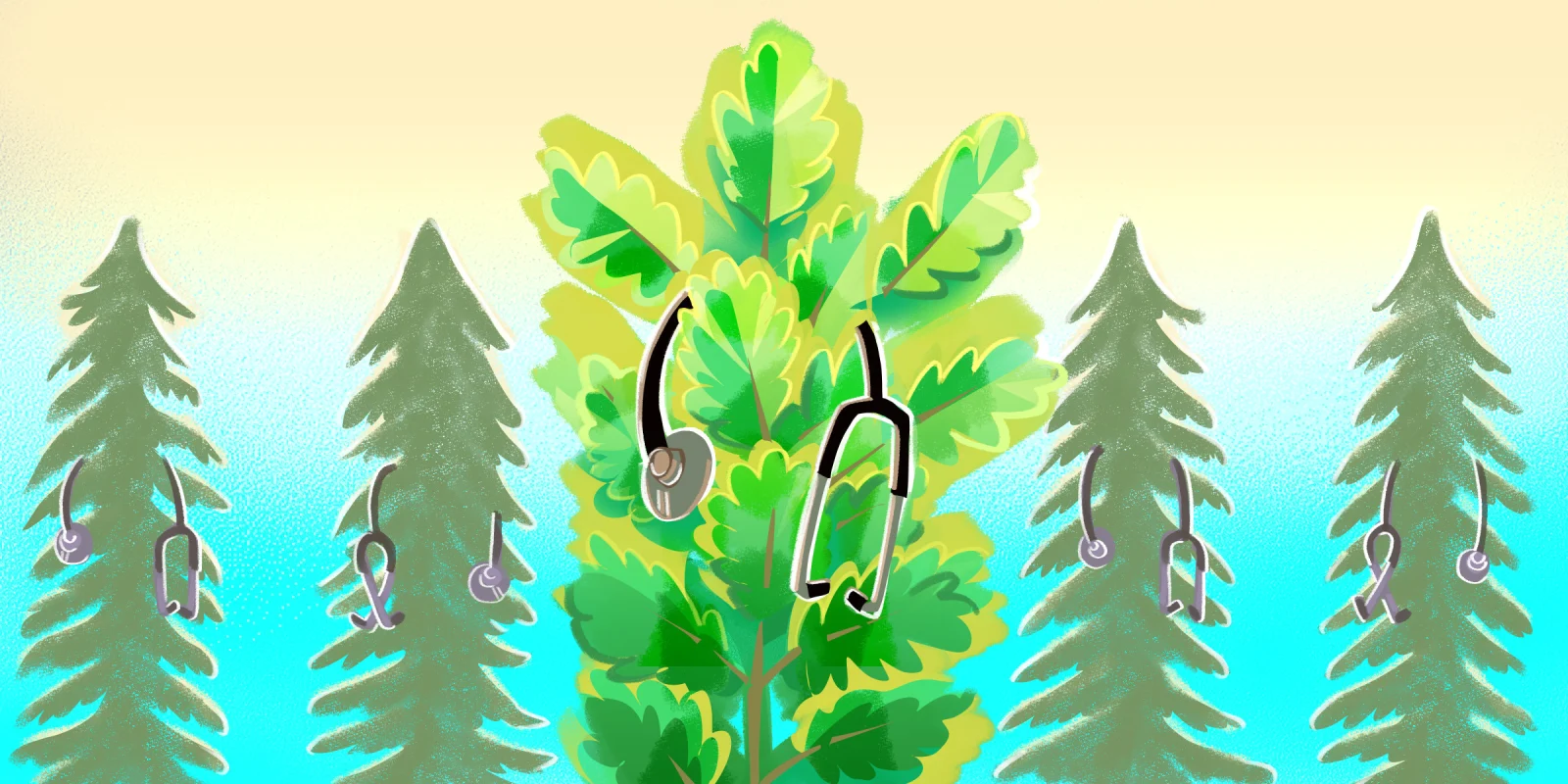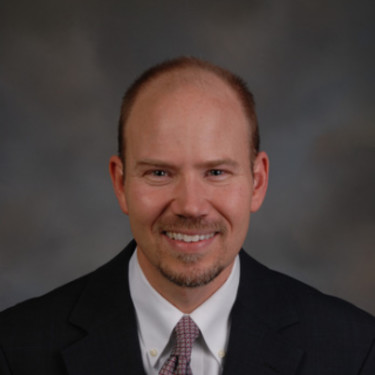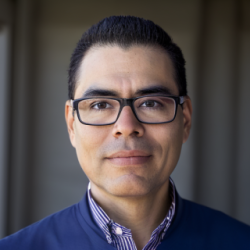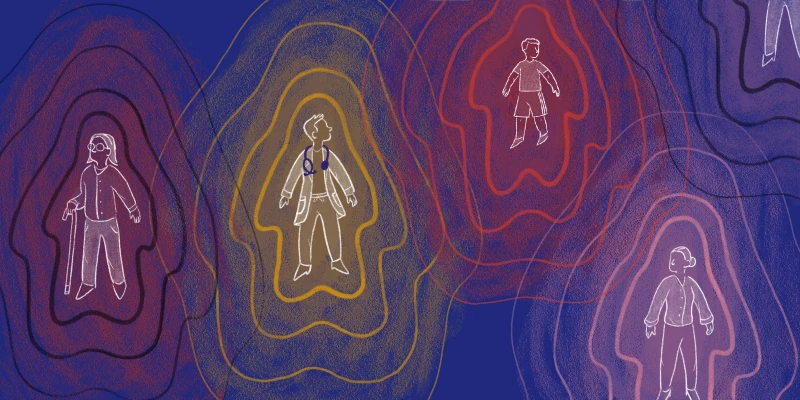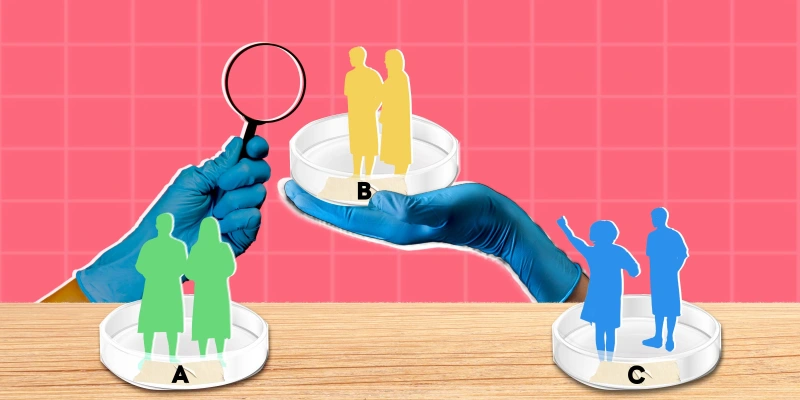I’ve had the good fortune to spend the last four months working at St. Erik’s Eye Hospital in Stockholm, Sweden. Eleven years ago, I’d worked at St. Erik’s filling in for three surgeons on maternity leave; the medical culture and work-life balance impressed me and I’d always wanted to return. Beyond that, I wanted to live for a time in Sweden because I have Swedish heritage. Specifically, my great-grandfather was from the small inland island of Visingsö, which is located in Lake Vättern. Visingsö has the distinction of having amazing oak trees, which were historically used for Swedish Navy shipbuilding. I visited the island in September and was struck by how tall and straight the oak trees were. I thought that this was not normal for oaks, which usually spread out with a wide canopy. I was then introduced to the concept of “nurse trees” by one of the islanders — a term that I’ve adopted into my medical life.
When Visingsö’s oaks were planted, other faster-growing trees that grow straight were planted around them. The faster-growing trees (nurse trees) help direct the growth of the oak trees vertically. Trees compete for sunlight, and the nurse trees grow to be exposed to the sun. The slower growing oaks cannot spread out to create a canopy, but have to grow straight and vertically to reach the sun. This is why the oak trees on Visingsö are so tall and straight. Early on, the nurse trees also protect the smaller trees from the elements and animals that would feed on the oaks. It is sort of crazy to think that someone figured this out. But it wasn’t someone, it was the collective knowledge over generations.
This is such a delicate balance for the trees. If the nurse trees grow too fast or don’t allow any sunlight to the oaks, the oaks will not grow or will die. The nurse trees have to grow just enough and be at just the right distance from the oak (not too close and not too far away) to allow light and a path for the oaks to reach for the sky.
This nurse tree concept has made an impression on me. We are nurse trees for our children, students, residents, and fellows. Our growth and accomplishments should not stunt those around us, but rather be a model for others to grow tall and eventually exceed us. Don’t blot out the sun, but show them the way. Don’t be too close (do all the work for them) or too far away (leave them to make mistakes). Whether because of their familiarity with the concept or not, I’ve noticed that the Swedes are especially good at adopting a nurse tree-like behavior in many aspects of their medical culture. For instance, there’s quality mentorship of young surgeons in the OR, and there’s also strong support of surgeon mothers and fathers in the form of generous maternity and paternity leave.
I myself have adopted the approach in my domestic as well as international teaching in medicine. As a surgeon-teacher, early close mentorship is so important, but pulling back as the student-surgeon begins to make strides is a delicate balance. Eventually, they are the ones who become the principal surgeon and exceed me. At least, that is the goal. Internationally, I know that my mentees begin to exceed me when I receive fewer emails for advice.
You could make the argument that the nurse trees restrict the oaks’ growth and their natural potential — that the oaks should have a wide canopy that allows them to branch out. I would argue that, just as a child would eat as much candy as they could if you didn’t restrict them, an oak with a wide canopy is a glutton. That wide canopy, while impressive, isn’t as impressive as a tall tree that is above all of the canopies around it. Similarly, the young doctor who is let loose to make a lot of mistakes early on, rather than having close mentorship, loses confidence in their skills. The wide canopy of unsupervised trial and error is more likely to result in stunted, horizontal growth.
Just as the foresters on Visingsö made the observation over hundreds of years that you could have trees grow even higher than they would naturally, we have the collective knowledge over history to direct our mentees to grow higher than they would without our help to guide them. To make a strong community, you need those in front of you to provide a positive role model to help you grow. I think a problem that we have now is a potential lack of positive role models. We also have gluttons that are soaking up the sun and spreading a wide canopy, so that the oaks around them are stunted. So, I encourage you to be a nurse tree. Grow tall to help guide those around you to grow taller. This is the way our medical communities will be better than the ones before us.
What metaphors have you found helpful for thinking through a life in medicine? Share in the comments!
Dr. Richard Allen is an oculoplastic surgeon in Houston, TX. He practiced at St. Erik’s Eye Hospital in Stockholm, Sweden from September to December of 2024 as a visiting professor. He is an avid cyclist and enjoys spending time with his wife outdoors. Dr. Allen is a 2024–2025 Doximity Op-Med Fellow.
Illustration by April Brust
